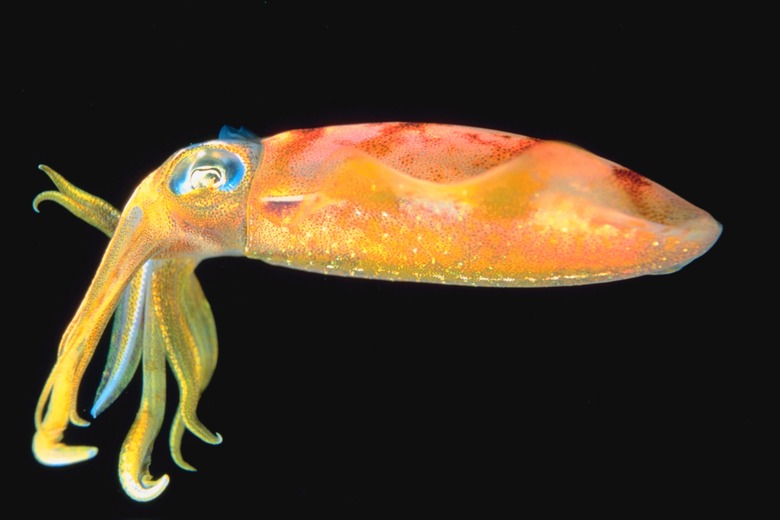What Is A Squid's Role In The Ecosystem?
With at least 300 known species, the squid plays a vital role in marine ecosystems as both predator and prey. Not only do these creatures feed upon many different oceanic species, but they also provide food to many other creatures, and those creatures provide food to other larger predators as well. This makes the squid a crucial puzzle piece in sustaining the entire ecosystem and maintaining balance.
A Squid's Role as Predator
A Squid's Role as Predator
Different species of squid prey on different sea creatures. Smaller squid species hunt invertebrates such as polychaete worms, small or larval fish, shrimp and other crustaceans, and even other squid species. A variety of smaller squid species exist, such as the commonly fished loligo squid. Larger squid species can hunt larger species of fish; they can also feed on other squid species. Some larger squid species include the Humboldt squid and the notorious giant squid.
A Squid's Role as Prey
A Squid's Role as Prey
Giant squid also provide a fantastic example of the importance of squid as a prey species as well as a predator. They are famously known as the preferred prey of the sperm whale. Sperm whales often bear scars from their deep-sea battles with giant squid. Though giant squid are the most well-known example, the hundreds of different squid species provide food sources to numerous predator species across the globe.
Prey to Sperm Whales
Prey to Sperm Whales
Giant squid, as well as several other squid species, provide an important food source to the sperm whale. In fact, a sperm whale can consume up to 3% of its body weight in squid in a single day. Considering that male sperm whales can easily reach 100,000 pounds, that means a single whale can potentially eat 3,000 pounds of squid or more per day!
Prey to Albacore Tuna
Prey to Albacore Tuna
Though sperm whales certainly provide a classic example of an animal that feeds on squid, they definitely aren't the only ones. Many species of fish that humans rely on for food also regularly feed on squid. For example, the albacore tuna hunts squid as one of its prey species. Albacore tuna make up the vast majority of canned tuna production and provide an important source of food for people.
Prey to Coho Salmon
Prey to Coho Salmon
The coho salmon is another commercially important food source for people, and it also feeds on squid during part of its life cycle. This fish spends part of its life in fresh water but feeds on squid and fish during the oceanic portion of its lifespan. Fishermen catch over ten million coho salmon per year, which they sell both fresh and canned. However, humans aren't the only creatures that feed on and benefit from healthy populations of coho salmon.
Through its support of the coho salmon, squid also indirectly benefit all the other animals that prey on the salmon. This means that squid provide a double benefit to many species – they support the seals, sea lions and orcas that prey on salmon while also providing a food source to them directly as well!
Commercial Benefits to Fishermen
Commercial Benefits to Fishermen
As an important prey species, squid indirectly support many different commercial fisheries that humans rely upon. However, some squid species also directly benefit fishermen.
For example, the loligo squid has a short lifespan and reproduces rapidly, making it a perfect species for sustainable fishing. The squid would typically die shortly after spawning, so fishermen capture them just after spawning occurs to allow the squid to breed and maintain their populations. Fishermen captured a total of 32 million pounds of loligo squid in 2019, which equated to about $16.4 million dollars worth of squid!
Cite This Article
MLA
Zinni, Yasmin. "What Is A Squid's Role In The Ecosystem?" sciencing.com, https://www.sciencing.com/squids-role-ecosystem-5825846/. 30 September 2021.
APA
Zinni, Yasmin. (2021, September 30). What Is A Squid's Role In The Ecosystem?. sciencing.com. Retrieved from https://www.sciencing.com/squids-role-ecosystem-5825846/
Chicago
Zinni, Yasmin. What Is A Squid's Role In The Ecosystem? last modified March 24, 2022. https://www.sciencing.com/squids-role-ecosystem-5825846/
